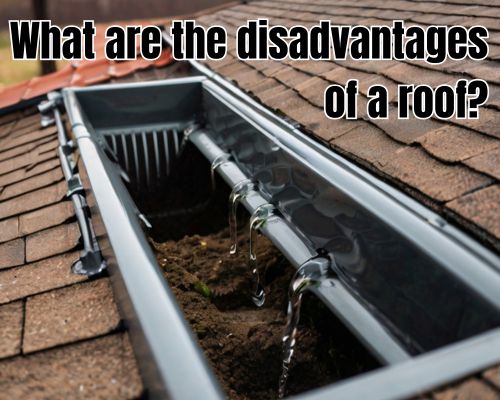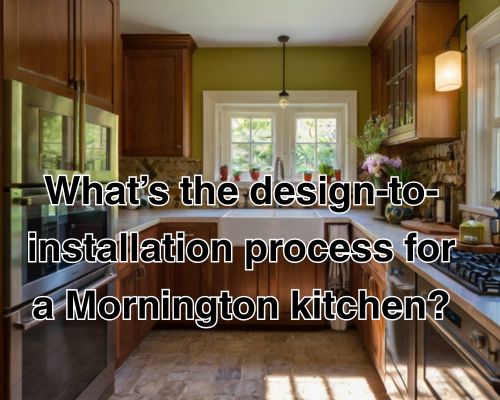When discussing roofing in Melbourne, Australia, the focus often shifts toward advantages—durability, insulation, weather protection, and aesthetic appeal. But just like any major structural component, roofing systems are not without drawbacks. So, what are the disadvantages of a roof? From maintenance headaches and cost implications to climate challenges and material weaknesses, Melbourne homeowners should be well-informed before investing in a roof upgrade or new installation.

With Gutter Cleaning Melbourne, we will unpack the common disadvantages of various roofing systems, especially as they apply to Melbourne’s unique climate and housing standards.
🔍 The Big Picture: Understanding Melbourne’s Roofing Environment
Melbourne is known for its highly variable weather—”four seasons in a day” is more than a catchphrase here. From harsh UV exposure to sudden downpours and wild temperature shifts, your roof is your home’s first line of defense. Unfortunately, these conditions also exacerbate some key disadvantages of roofing systems, especially when materials and installation choices aren’t optimized for the local climate.
🏚️ 1. High Initial Cost and Installation Complexity
One of the most immediate disadvantages of a roof—especially a high-quality one—is the upfront cost. Whether you’re installing Colorbond roofing, concrete tiles, or terracotta tiles, the materials alone can account for thousands of dollars. In Melbourne, roof installation prices typically range between $80 to $130 per square metre, with premium options climbing higher.
Factors that drive up costs:
- Roof pitch (steep angles require more safety precautions)
- Structural support modifications
- Complex design features (skylights, gables, valleys)
- Labour shortages in the Melbourne roofing industry
🔧 2. Maintenance and Repair Burdens
Even the most durable roofing systems in Melbourne, like Colorbond or zincalume, aren’t maintenance-free. Over time, gutter clogging, rust, paint fading, and sealant failure can create ongoing upkeep responsibilities.
For example:
- Tile roofs require regular inspection for cracked or displaced tiles.
- Metal roofs can suffer from corrosion—especially if installed near coastal areas like St Kilda or Brighton.
- Roof plumbing components like downpipes and flashings may fail if not inspected annually.
💡 Local Insight: Due to Melbourne’s strong seasonal winds, it’s not uncommon for flashing to lift or ridge capping to dislodge, leading to potential leaks.
🌧️ 3. Vulnerability to Weather Extremes
Melbourne’s erratic weather is a true test for any roofing system. Even high-end materials can fall short when pushed to extremes.
Weather-related disadvantages include:
- UV degradation of materials like PVC membranes or bitumen.
- Water ingress during sudden storms, especially on flat roofs with inadequate drainage.
- Damage from hail storms, which can dent metal roofing or crack tiles.
With record rainfalls becoming more frequent in Victoria due to climate change, roofs that were once weather-tolerant may now struggle with overflow issues, gutter stress, or ponding on low-slope surfaces.
🧊 4. Thermal Discomfort Without Proper Insulation
A poorly insulated roof in Melbourne can act like a heat sponge in summer and a sieve in winter. While roof sarking, foil insulation, and ventilation systems can mitigate the problem, not all homeowners are willing or able to invest in these extras.
Key thermal disadvantages:
- Metal roofing can radiate heat downward if uninsulated.
- Tile roofing retains heat long after sunset, making homes uncomfortably warm.
- Flat roofs are prone to heat pooling unless equipped with reflective coatings.
📍 SEO-friendly tip: When searching for “energy-efficient roofs in Melbourne” or “thermal roofing issues,” users are likely trying to troubleshoot comfort problems caused by uninsulated or outdated roofing systems.
🧱 5. Material-Specific Disadvantages
Let’s explore how each major roofing material commonly used in Melbourne brings its own set of challenges:
a) Colorbond Roofing
- Noisy during rain or hail unless soundproofed.
- Susceptible to scratches and surface corrosion.
- Requires skilled installation to avoid thermal movement issues.
b) Terracotta and Concrete Tiles
- Heavy—requiring reinforced structural support.
- Brittle and prone to cracking under pressure.
- Moss and lichen build-up is common, particularly in leafy suburbs like Eltham and Ringwood.
c) Asphalt Shingles (less common but still used)
- Shorter lifespan in Australian conditions.
- Poor resistance to high UV exposure.
- Generally not recommended for Melbourne due to susceptibility to extreme weather.
🏘️ 6. Hidden Costs and Compliance Concerns
Many Melbourne homeowners overlook the hidden costs of roofing. Council permits, building code compliance under the Victorian Building Authority (VBA), and warranty terms all factor in.
💬 Consider this:
- Alterations to roof plumbing must comply with AS/NZS 3500 standards.
- Non-compliance may void insurance claims in the event of a roof leak or collapse.
- Older homes in suburbs like Fitzroy or Carlton may require asbestos inspection before roof replacement.
⏳ 7. Lifespan Limitations and Replacement Cycle
Every roof has a lifespan. Even with perfect maintenance, roofs degrade. Melbourne’s UV radiation, moisture levels, and increasing frequency of severe weather events can accelerate this timeline.
Average lifespans:
- Colorbond roofing: ~25–40 years
- Concrete tiles: ~50 years (though moss and grime buildup is constant)
- Terracotta tiles: ~75+ years (if maintained)
The disadvantage here is that no matter how well you care for your roof, replacement or major repairs are inevitable—and expensive.
🔁 8. Environmental Impact
While some roofing materials are recyclable (e.g., metal sheets), others contribute significantly to landfill waste. Tile roofing, especially if broken during removal, often ends up in disposal rather than reuse.
Sustainability disadvantages include:
- Energy-intensive manufacturing (especially clay tiles and cement-based materials)
- Limited recyclability
- Toxic runoff from treated surfaces during Melbourne’s rainy season
🌱 Tip: If eco-conscious roofing is a priority, homeowners in Melbourne are now considering green roofs or solar-integrated roofing systems, despite their higher initial cost.
🧠 Conclusion: Disadvantages ≠ Deal Breakers
So, what are the disadvantages of a roof—specifically in Melbourne? They range from climate sensitivity and high maintenance demands to cost burdens and limited lifespans. However, understanding these drawbacks arms homeowners with the knowledge needed to make informed choices.
Rather than avoiding roofing projects altogether, Melburnians should:
- Choose climate-suitable materials.
- Insist on licensed roofing professionals like Gutter Cleaning Melbourne familiar with local standards.
- Budget for ongoing maintenance, not just installation.
When you weigh the cons against proper planning, most disadvantages can be mitigated or even turned into opportunities for increased home value, energy efficiency, and long-term cost savings.
